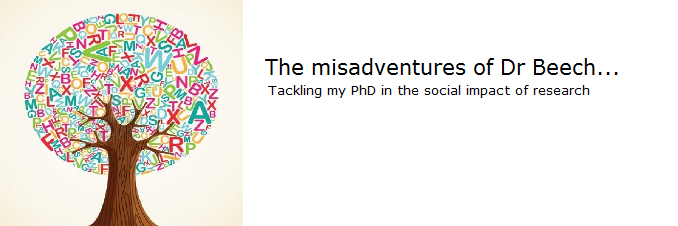
On my last post I had just handed in my extended research proposal to the School board and ethics committee, and was nervously awaiting the results.
Proposal accepted!
Thankfully, I don’t have to go back to square one just yet, as they were happy with my work so far and even gave me some lovely feedback about the interesting topic and reading I had done so far. Woohoo!!
Anyhow, following this I struggled to figure out where to go next, and kept coming back to my proposal document and bleakly staring at the words, panicking that I couldn’t figure out where to slot in my next reading notes or start a brand new section. Obviously, this is a totally fruitless way to waste vast swathes of time, and my productivity hit a bit of a lull.
Group inspiration
Luckily, yesterday I was on a half day part-time PhD support group organised for the University, and it has really given me the kick-start I needed. I would definitely advise getting involved in these kind of groups and networks as early as possible, as they are a great way to collaborate with other new researchers and try out ideas with each other.
Be gone writer’s block!
As I was explaining the rut I was in and my frustration, another PhD student and lecturer, Jean, told me about the way she writes and how it works for her, and it was like a switch had been flicked in my head and banished my writers block! Jean explained that, to make things more manageable, very early on in her writing she made separate documents for each section of her thesis-to-be. Then, when reading through her articles and book chapters, she would make a note of which section they were relevant to, and add a few notes to that document, and so on.
Now, I know it sounds obvious when written down like this, but when you are at home on your own staring at a document for what feels like the billionth time, logical answers aren’t always forthcoming, so it really was a breakthrough to talk this through with Jean.
Choosing your sections
Feeling super motivated, I scooted home after work and got straight on with separating out my sections and updating them with some recent reading. For now, my structure looks like this:
- Introduction (covers a summary, research questions and aims and timeline)
- Context (focuses on recent changes in funding and research landscapes, including assessment)
- Social impact – definitions
- Social impact – assessing, how and why
- Methodology
- Research Design
All in all it took me a couple of hours to organise everything and update each section with a few new pieces – what a sense of satisfaction!
Big thanks to Jean for sharing this method 🙂



